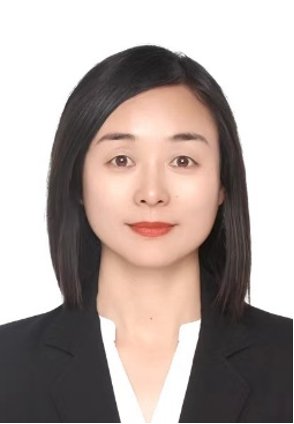
Rong Qian Ph.D
Academic title:professor
Phone:021-69163655
E-mail: qianrong@mail.sic.ac.cn
Address:No. 585 Heshuo Road, Shanghai
Postal Code:201899
Website:-
Resume:
Rong Qian, Professor, Deputy director of Analysis and Testing Center for Inorganic Materials and Deputy director of National Center for Inorganic Mass Spectrometry in Shanghai, Shanghai Institute of Ceramics, Chinese Academy of Sciences.
Research Summary
In my recent work, I have conducted extensive research and development work aiming at the critical challenge of precise characterization of trace elements in advanced materials. This includes the study and development of new techniques, methods, instruments and application for glow discharge mass spectrometry. A novel ionization strategy using magnetic field enhancement in glow discharge mass spectrometry has been proposed, and a novel sample chamber with magnetic field enhancement has been constructed, as long as some new methods. These collective efforts have culminated in significant breakthroughs, particularly in enhancing the sensitivity of trace element analysis and overcoming the limitations in characterizing non-conductive materials. These advancements have provided high-level technical support for national strategic needs, major projects and so on.
Research Interests
1. New techniques and methods for materials characterization
2. Research on interface/surface reaction mechanisms of composite materials
3. Development and Utilization of Innovative Nanomaterial-Based Gas Sensors for the Detection of Human Exhaled Breath Gases
4. Development of the key parts and analytical instruments
Responsible for Research Projects
1. National Key Research and Development Program of China, “Research on novel methods and depth-profiling techniques for GDMS analysis of insulators, semiconductors, and high-purity rare earth materials”, (2021YFF0700104), 2021.12-2026.11
2. National Natural Science Foundation of China, “Studies on magnetic field regulating sputtering mechanism and new depth profiling analysis method of glow discharge mass spectrometry”, (22274164), 2023.01-2026.12
3. National Natural Science Foundation of China, “Establishment of techniques and systems for radio frequency glow discharge mass spectrometry based on the magnetic enhancement”, (21775156), 2018.01-2021.12
4. Science and Technology Innovation Plan of Shanghai Science and Technology Commission, “High-precision multi-field coupling aerospace material microbiological corrosion testing instrument” (20142201100), 2020.12-2023.12
5. Shanghai Intergovernmental International Cooperation Project, “Development and performance study of novel carbon nanocomposite thin film gas sensing sensor”, (19520712000), 2019.04-2022.04
Recent Publications
1. Xian Li, Wang Zeng, Shangjun Zhuo, Bangwei Qian, Qiao Chen, Qun Luo, Rong Qian*, Highly sensitive room-temperature detection of ammonia in the breath of kidney disease patients using Fe2Mo3O8/MoO2@MoS2 nanocomposite gas sensor, Advanced Science, 2024, 2405942.
2. Jiawei Pan, Huihui Yuan, Jiaxin Wu, Meng Li, Xiangwei Wu, Wang Zeng, Zhaoyin Wen*, Rong Qian*, Anion-dominated solvation in low-concentration electrolytes promotes inorganic-rich interphase formation in lithium metal batteries, Small, 2024, 2404260.
3. Anqi Liu, Wang Zeng, Zhenli Zhu, Shangjun Zhuo, Xuechao Liu, Chenggen He, Jinghong Fang, Huan He, Rong Qian*, Determination and study of correlations of relative sensitivity factors in metal and metal oxide samples by glow discharge mass spectrometry, Microchemical Journal, 2024, 111249.
4. Lei Huang, Wang Zeng, Rong Qian*, Shangjun Zhuo, Zheming Gu, Anqi Liu, Jie Gao, Qiao Chen, Depth-profiling analysis of ZnO layers with three morphologies by direct-current glow discharge mass spectrometry, Microchemical Journal, 2023, 192, 108904.
5. Mengli Wang, Rong Qian*, Shangjun Zhuo, Qiao Chen, Zhongquan Li, Bin Zhao, Larmor precession: observation and utilization for boosting the signal intensity of radio frequency glow discharge mass spectrometry, Analytical Chemistry, 2020, 92, 14, 9528-9535.



